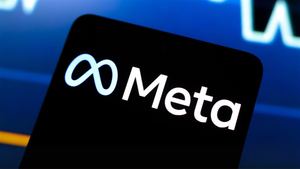
The financial world is abuzz with the growing influence of Artificial Intelligence, and nowhere is its potential more keenly felt than in the volatile realm of cryptocurrency, particularly meme coins. As of September 28, 2025, the prospect of AI, epitomized by large language models like ChatGPT, predicting or even catalyzing the next meme coin mania is a topic of intense debate among investors and market analysts. While AI offers unprecedented capabilities in data analysis and trend identification, its role in forecasting highly speculative assets like meme coins is met with a blend of cautious optimism and significant skepticism.
The immediate implications of AI's deeper involvement in speculative asset predictions are multifaceted. On one hand, it promises enhanced market speed and efficiency, democratizing access to sophisticated analytical tools for retail investors. On the other, it raises concerns about increased market volatility, the potential for new forms of market manipulation, and the formation of speculative bubbles if numerous AI models converge on similar strategies. The financial markets are grappling with how to harness AI's power while mitigating the inherent risks in a sector known for its unpredictable, sentiment-driven surges.
The Algorithmic Whisper: How AI Shapes Meme Coin Speculation
The intersection of AI and meme coin speculation is evolving rapidly, with large language models (LLMs) like ChatGPT playing an increasingly prominent, albeit controversial, role. AI is being deployed not as a definitive oracle, but as a sophisticated tool to analyze vast datasets, interpret market sentiment, and even generate trading strategies. ChatGPT, in particular, is utilized for its ability to process natural language, allowing it to scour social media, news articles, and forum discussions to gauge public perception and community engagement – often key drivers of meme coin value. By identifying patterns in these amorphous data points, AI aims to provide insights into which meme coins might be gaining traction or are poised for a surge.
The history of meme coin surges provides a crucial backdrop to this AI-driven speculation. The original meme coin, Dogecoin (DOGE), first gained significant traction in 2013, but its meteoric rise, largely fueled by social media and endorsements from figures like Elon Musk, occurred in early 2021. This was followed by the spectacular ascent of Shiba Inu (SHIB) in late 2021, which captivated retail investors with its "Dogecoin killer" narrative and strong community. More recently, coins like Pepe (PEPE) have demonstrated that the meme coin phenomenon is far from over, exhibiting rapid pumps and dumps driven almost entirely by internet culture and speculative fervor. These events underscore the challenge for AI: predicting movements driven by unpredictable human emotion and viral trends.
Key players in this emerging landscape include various cryptocurrency exchanges like Binance (BNB), Coinbase (COIN), and Kraken, which list these volatile assets and provide the infrastructure for trading. AI platforms and data analytics firms are also emerging, offering tools that claim to predict market movements or identify trending assets. Beyond the technology, influential online communities on platforms like X (formerly Twitter), Reddit, and Telegram remain paramount. These communities often act as self-organizing forces, capable of initiating and sustaining the hype cycles that are fundamental to meme coin success. The challenge for AI is to not only analyze these communities but also to avoid inadvertently becoming another amplifier of their collective, often irrational, exuberance.
The Winners and Losers in an AI-Driven Meme Coin Market
The increasing integration of AI into cryptocurrency predictions, especially concerning meme coins, presents a complex landscape of potential winners and losers among public companies and market participants.
Potential Winners:
- Cryptocurrency Exchanges: Major exchanges like Coinbase (NASDAQ: COIN) and Binance (BNB) (though not publicly traded in the US, it's a dominant global player) stand to benefit significantly from increased trading volume. A meme coin mania, whether AI-predicted or not, drives substantial transaction fees and user engagement. AI tools can also help these platforms offer more sophisticated trading options and insights to their users, potentially attracting more traders.
- AI and Data Analytics Companies: Publicly traded companies specializing in AI infrastructure, data processing, and predictive analytics could see increased demand for their services. Firms that develop sophisticated algorithms capable of analyzing market sentiment, social media trends, and on-chain data relevant to cryptocurrencies will find a lucrative market. While no single public company solely focuses on meme coin prediction, those providing general AI and big data solutions, such as Palantir Technologies (NYSE: PLTR) or cloud service providers like Amazon (NASDAQ: AMZN) and Microsoft (NASDAQ: MSFT) through their AI offerings, could indirectly benefit from the broader adoption of AI in financial analysis.
- Decentralized Finance (DeFi) Protocols: Many meme coins are launched on decentralized exchanges (DEXs) and rely on DeFi infrastructure. Protocols like Uniswap (UNI) or PancakeSwap (CAKE) could see increased liquidity and usage during a meme coin surge, though their direct public market exposure might be limited to their governance tokens.
- Mining/Staking Operations: While less directly tied to meme coin speculation, a general increase in crypto activity and network usage, spurred by speculative interest, could indirectly benefit companies involved in crypto mining or staking infrastructure.
Potential Losers/Those Facing Challenges:
- Novice Retail Investors: The biggest losers in a highly speculative, AI-influenced meme coin market are often inexperienced retail investors. Lured by the promise of quick riches, they might follow AI-generated "signals" without understanding the underlying risks, often buying at the peak of a pump only to suffer significant losses when the market corrects. The increased speed and complexity introduced by AI can make it even harder for them to make informed decisions.
- Traditional Financial Advisors: As AI tools become more accessible and seemingly capable of generating insights, traditional financial advisors who do not adapt might find their services less appealing to a segment of the market seeking high-growth, albeit high-risk, opportunities.
- Companies with Poor Risk Management: Any company, be it an exchange or a hedge fund, that fails to implement robust risk management protocols in an AI-driven, highly volatile market could face substantial financial losses from sudden market shifts or exploits.
- Reputationally Damaged Projects: Meme coins are inherently risky. If AI predictions lead to widespread losses or market manipulation, the overall reputation of certain meme coin projects or even the broader crypto space could suffer, impacting their long-term viability.
The effect on these entities is primarily driven by how AI is integrated into trading and investment strategies. While AI offers powerful analytical capabilities, its use in speculative markets amplifies both potential gains and losses, demanding careful consideration from all stakeholders.
The Wider Significance: AI, Speculation, and Market Evolution
The prospect of AI, and specifically tools like ChatGPT, influencing or predicting meme coin manias carries a wider significance that transcends mere speculative trading. This phenomenon sits at the nexus of several broader industry trends, signaling a profound shift in how financial markets operate, the challenges they face, and the regulatory frameworks required to govern them.
Firstly, this event underscores the accelerating trend of AI integration into financial analysis and trading. What began with algorithmic trading in traditional markets is now permeating the highly decentralized and often unregulated crypto space. The ability of AI to process vast, unstructured data – from social media sentiment to complex on-chain metrics – is pushing the boundaries of market intelligence. This move towards AI-driven insights aligns with a broader industry shift towards data-centric decision-making, where predictive models become as crucial as fundamental analysis. However, it also highlights the inherent risk of over-reliance on models that might not fully grasp the unpredictable, human-driven psychology of speculative bubbles.
Secondly, the potential for AI to fuel meme coin surges has ripple effects on competitors and partners across the financial ecosystem. Traditional financial institutions, initially dismissive of meme coins, are now forced to acknowledge their market impact and the technological advancements driving them. This could spur greater investment in their own AI capabilities to understand and perhaps even participate in the digital asset space, or conversely, to develop more robust risk assessment tools to protect against contagion. For existing crypto exchanges and platforms, the challenge is to balance the excitement of new trading opportunities with the imperative of market integrity and investor protection. Furthermore, the rise of AI-driven speculation could intensify competition among various AI tool providers, each vying to offer the most accurate or timely predictions.
Thirdly, the regulatory and policy implications are substantial. Current financial regulations are often ill-equipped to handle the speed, anonymity, and global nature of cryptocurrency, let alone the added layer of complexity introduced by AI. Regulators worldwide, including the U.S. Securities and Exchange Commission (SEC) and various national financial authorities, are grappling with how to classify meme coins, prevent market manipulation (especially if AI is involved in "pumps"), and protect retail investors. The use of AI in predicting or influencing these highly volatile assets could necessitate new policies specifically addressing algorithmic market manipulation, transparency in AI models used for financial advice, and accountability for platforms that facilitate such trading. The fear is that AI could make detecting and prosecuting market abuse significantly more challenging.
Historically, speculative bubbles are nothing new. From Tulip Mania in the 17th century to the Dot-Com bubble of the late 1990s, human psychology and herd mentality have driven assets to irrational valuations. The meme coin phenomenon is a modern iteration, leveraging internet culture and social media. The crucial difference now is the introduction of AI as a potential accelerant. While past bubbles relied on human-to-human communication, AI can amplify signals, process information at machine speed, and potentially create a feedback loop that rapidly inflates prices, making these cycles shorter, more intense, and potentially more destructive for those caught on the wrong side. This comparison highlights a new frontier in financial market dynamics, where technological prowess meets age-old human speculative tendencies.
The Road Ahead: Navigating the AI-Driven Meme Coin Landscape
Looking ahead, the interplay between AI and meme coin speculation presents a fascinating, albeit precarious, future for financial markets. In the short term, we can anticipate a continued surge in AI tools and platforms claiming to offer superior insights into meme coin trends. This will likely lead to increased retail investor engagement, drawn by the allure of quick gains, potentially fueling more frequent and intense meme coin pumps. However, this also means an elevated risk of rapid corrections and significant losses, as the underlying fundamentals of most meme coins remain speculative at best. Exchanges and liquidity providers will face the challenge of managing this increased volatility and ensuring system stability under stress.
In the long term, several strategic pivots and adaptations will be required across the industry. AI development itself will likely focus on more sophisticated models that can differentiate genuine community growth from artificial hype, and perhaps even identify potential market manipulation tactics. Regulatory bodies, recognizing the systemic risks, will likely intensify their efforts to establish clearer guidelines for AI's role in financial markets, particularly concerning speculative assets. This could include requirements for transparency in AI algorithms, stricter enforcement against market manipulation (whether human or AI-driven), and enhanced investor protection mechanisms. Companies like Coinbase (NASDAQ: COIN) might need to invest heavily in AI-driven compliance and risk management tools to navigate this evolving regulatory landscape.
Market opportunities will emerge for platforms that can responsibly integrate AI insights with robust educational resources, helping investors understand the risks involved. There will also be a demand for AI tools that offer more than just price prediction, focusing instead on fundamental analysis of tokenomics, project utility (if any), and genuine community development. Challenges will include preventing AI from exacerbating market instability, ensuring data privacy, and guarding against the creation of "AI-driven echo chambers" that amplify speculative fervor. Potential scenarios range from a highly regulated, AI-augmented crypto market where AI serves as a valuable analytical assistant, to a more chaotic environment where AI contributes to faster, more destructive boom-bust cycles, necessitating stronger circuit breakers and investor safeguards.
Wrapping Up: Key Takeaways and Future Watchpoints
The potential for ChatGPT and other AI models to influence or predict the next meme coin mania is a defining narrative in the financial markets of 2025. The key takeaway is that while AI offers unparalleled analytical power, enabling faster data processing and sentiment analysis, it is not a foolproof crystal ball, especially for inherently speculative assets driven by unpredictable human behavior and viral trends. Its involvement amplifies both the potential for rapid gains and the significant risks of equally swift losses, fundamentally altering market dynamics by increasing speed and complexity.
Moving forward, the market will be characterized by a delicate balance between technological innovation and the imperative for responsible deployment. Investors should recognize that AI, while a powerful tool, is an enhancer of existing market forces, not a replacement for sound investment principles, due diligence, and risk management. The "human in the loop" remains crucial, as AI models are only as good as the data they are trained on and the prompts they receive, lacking true intuition or foresight into Black Swan events.
What investors should watch for in the coming months includes the evolution of regulatory frameworks globally, particularly how they address AI's role in market analysis and potential manipulation. The development of more sophisticated, transparent, and auditable AI models will also be critical. Furthermore, observing how major cryptocurrency exchanges and financial institutions adapt their offerings and risk management strategies in response to AI-driven speculation will provide valuable insights. Ultimately, while AI will undoubtedly reshape the financial landscape, the meme coin market will likely continue to be a testament to the enduring power of human sentiment, amplified by the latest technological advancements.
This content is intended for informational purposes only and is not financial advice





